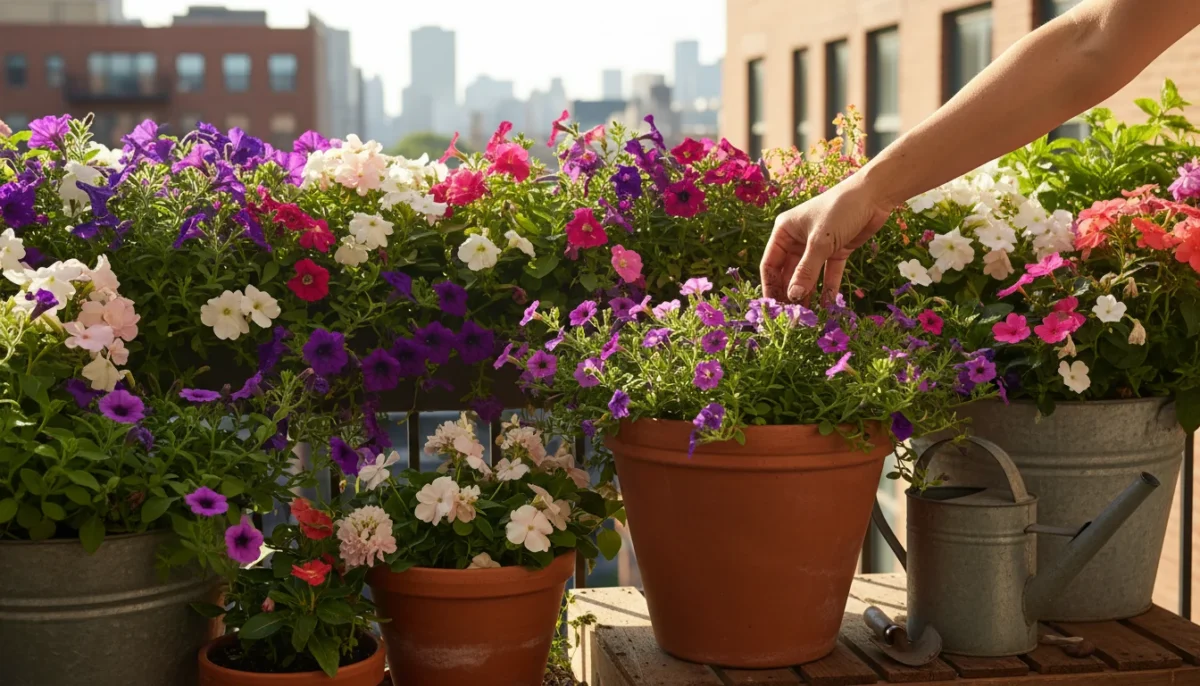You want vibrant color that lasts. You envision your small garden space, be it a balcony, patio, or tiny yard, bursting with life from spring through fall. For many gardeners, the dream of continuous blooms often collides with the reality of limited space or busy schedules. Fortunately, container gardening offers an elegant solution. It allows you to cultivate stunning floral displays, providing beauty and joy without demanding extensive garden beds. This guide empowers you to choose the perfect flowers that will perform tirelessly, brightening your outdoor living areas with their unwavering summer splendor. We focus on resilient, beautiful plants that thrive in pots and deliver season-long spectacle with minimal fuss.
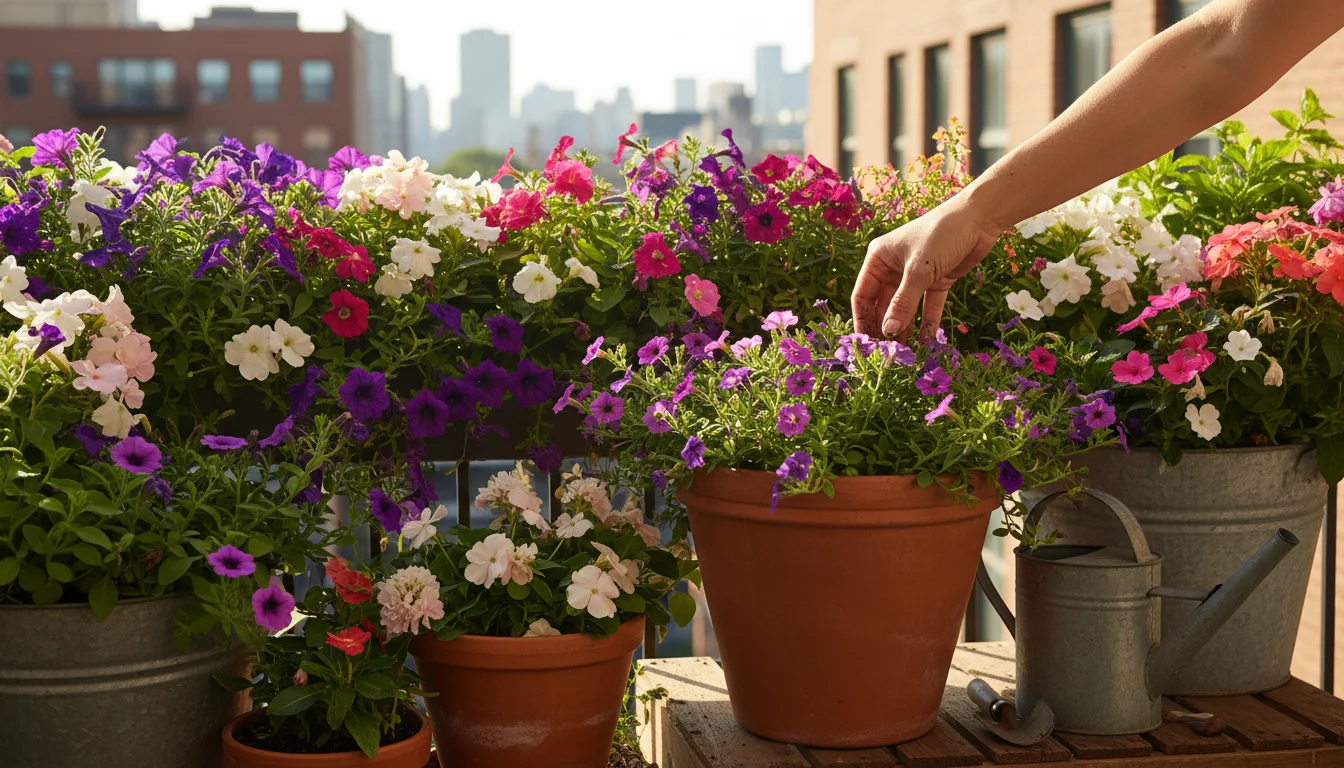
Why Container Flowers Thrive in Small Spaces
Container gardening truly shines for small spaces. It offers unparalleled flexibility, allowing you to create a dynamic garden design on a balcony, patio, or even a sunny windowsill. This method brings numerous advantages that directly benefit gardeners with limited land or those seeking low-maintenance solutions.
First, containers provide remarkable mobility. You can easily move plants to optimize sunlight exposure throughout the day, shelter them from harsh weather, or rearrange them for aesthetic appeal. This adaptability is particularly beneficial for balcony flowers, where sun patterns might change with the seasons or surrounding buildings cast new shadows. If a plant starts to look leggy or past its prime, you can temporarily move it to a less prominent spot while another takes center stage. This flexibility helps you control your garden’s appearance and health, a critical aspect of successful small-space gardening.
Second, container gardening allows for superior soil control. In garden beds, you often contend with existing soil conditions, which can range from heavy clay to nutrient-poor sand. With containers, you select the exact potting mix, providing an ideal growing medium for your chosen flowers. This means you can tailor the soil composition to specific plant needs, ensuring optimal drainage, aeration, and nutrient availability from the outset. For example, some plants prefer slightly acidic conditions, while others thrive in neutral soil. You achieve these specific requirements far more easily within a container, directly impacting the vigor and bloom production of your plants. This level of control significantly reduces common soil-related problems, promoting healthier summer blooms.
Third, containers often reduce pest and disease pressure. Elevating plants off the ground helps deter slugs and snails, which prefer to crawl along surfaces. Isolating plants in individual pots also slows the spread of soil-borne diseases. If one plant develops an issue, you can quickly remove or treat it without affecting an entire garden bed. This localized approach makes pest management more efficient and less daunting, contributing to the overall health of your balcony flowers. Moreover, the controlled environment of a container makes it easier to inspect plants closely, identifying problems before they escalate.
Finally, container gardening allows for a simplified approach to maintenance. You focus your watering, fertilizing, and pruning efforts on individual plants, rather than managing a large, sprawling garden. This focused attention often translates into better plant health and more prolific flowering. Deadheading, the removal of spent blooms, becomes a simple, almost meditative task as you tend to a manageable collection of pots. For busy individuals or new gardeners, this scaled-down approach makes gardening less intimidating and more enjoyable, reinforcing the positive aspects of nurturing a living space.
The benefits of container gardening extend beyond mere convenience. It empowers you to cultivate beautiful, thriving summer blooms, even when space is at a premium. By understanding these advantages, you gain confidence in selecting and caring for flowers for containers, transforming your outdoor area into a vibrant oasis.
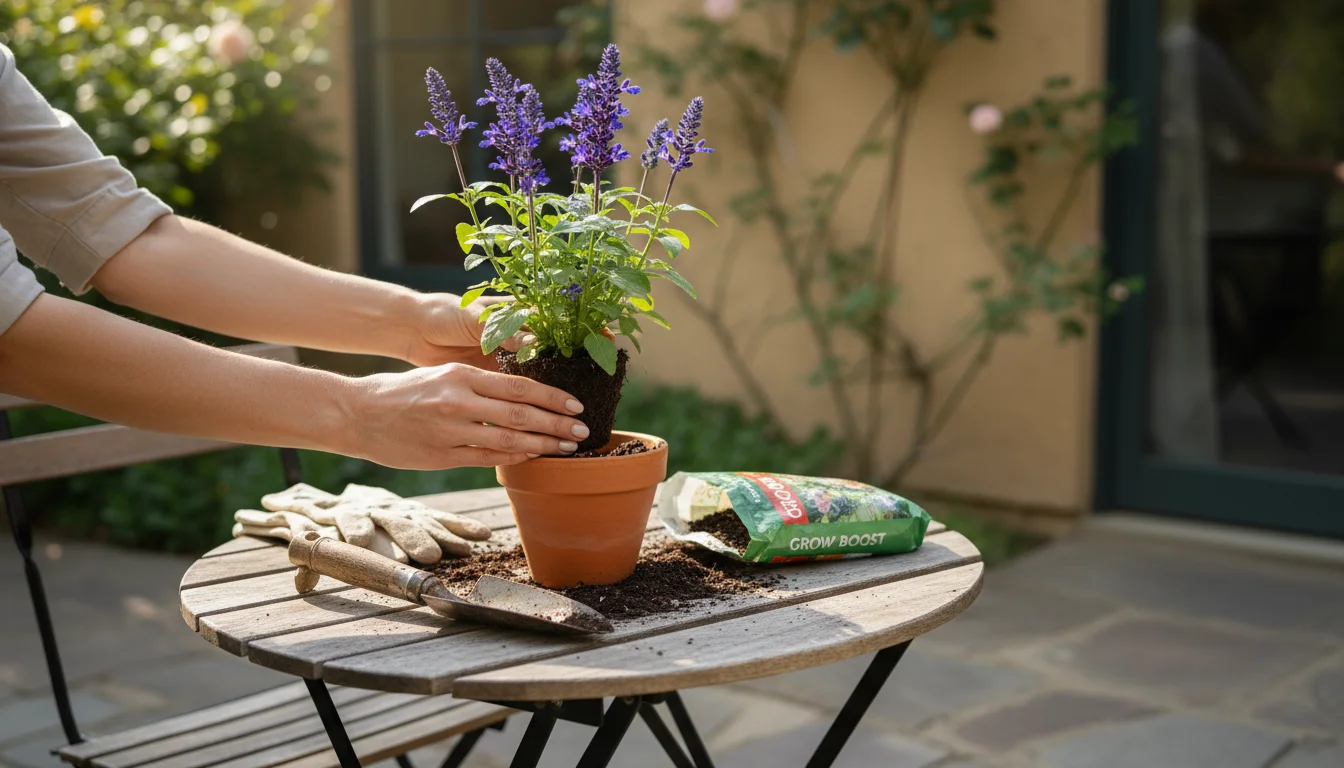
Essential Container Gardening Basics for Summer Blooms
Successful container gardening, especially for plants you expect to bloom all summer, hinges on a few fundamental practices. Getting these basics right provides a strong foundation for healthy, vigorous flowers. You need to consider your containers, the potting mix you use, and the crucial role of sunlight.
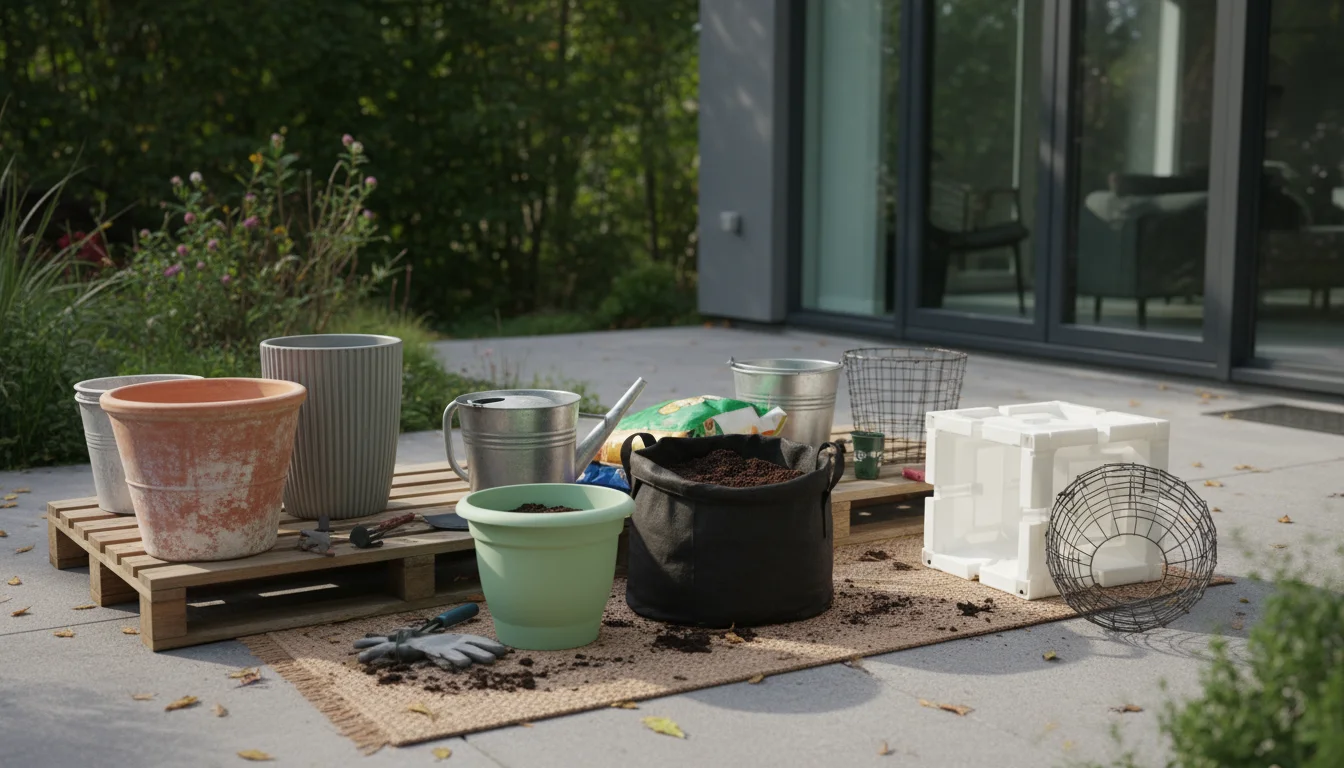
Choosing the Right Containers
The container you select significantly impacts plant health. Size matters. A general rule states that larger pots offer more stability for root growth and hold moisture longer, leading to less frequent watering. For most summer blooms, aim for containers with a diameter of at least 10-12 inches, with deeper pots being preferable for plants with extensive root systems or larger mature sizes. Small containers dry out rapidly in summer heat, stressing your plants and hindering bloom production.
Material also plays a role. Terracotta pots look classic and allow excellent air circulation to the roots, but they are porous and dry out quickly. Plastic pots retain moisture well but can overheat roots in direct sun. Glazed ceramic or resin pots offer a good balance, holding moisture while providing a more stable temperature. Whatever material you choose, ensure the container has adequate drainage holes at the bottom. Without proper drainage, water collects, suffocating roots and leading to rot, a common killer of container plants. If your chosen pot lacks holes, you must drill them yourself before planting. Placing a layer of broken pottery or gravel at the bottom is a common myth; it actually impedes drainage. Instead, just ensure the holes are clear.
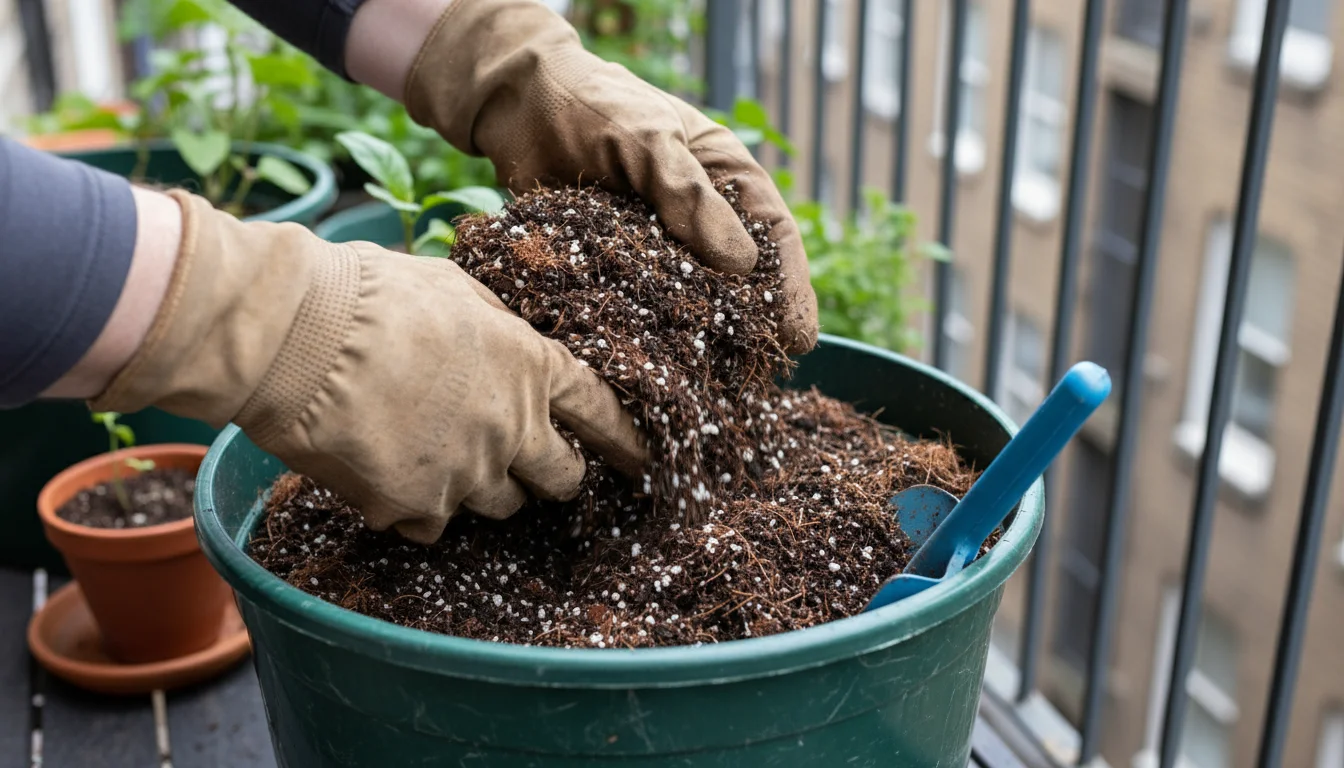
Selecting the Ideal Potting Mix
The soil you use in containers is not garden soil. Garden soil compacts too easily in pots, preventing proper air and water movement, which suffocates roots. Instead, always use a high-quality potting mix specifically formulated for containers. A good potting mix is lightweight, drains well, yet retains sufficient moisture and nutrients. It typically contains a blend of peat moss or coco coir, perlite or vermiculite for aeration, and compost or other organic materials for nutrients.
When filling your containers, do not compact the potting mix too densely. Gently firm it around the plant roots, but allow some looseness. This ensures good aeration, which is just how air circulates around the roots, preventing them from drowning. A healthy potting mix provides the necessary environment for strong root development, directly supporting prolific summer blooms. Consider mixes that include a slow-release fertilizer for an initial nutrient boost, though you will still need to supplement this throughout the growing season.
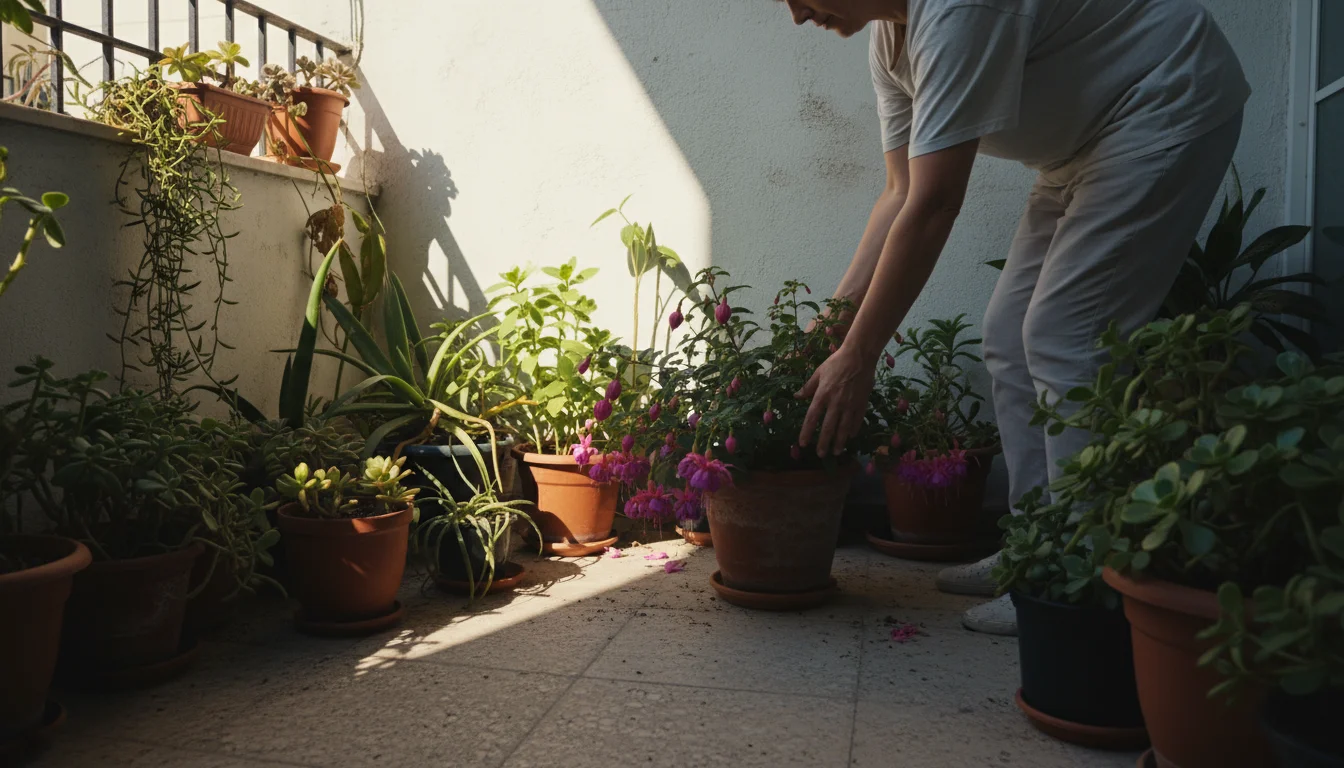
Understanding Sunlight Requirements
Sunlight is the energy source for your flowering plants. Most flowers that bloom all summer require at least six hours of direct sunlight per day to produce abundant blooms. This means choosing a location on your balcony, patio, or yard that receives ample sun. “Full sun” typically refers to six or more hours of direct sun. “Partial sun” or “partial shade” indicates three to six hours of sun, often with protection from the intense afternoon rays. “Full shade” means less than three hours of direct sun.
Match your plant choices to your available light. Placing a sun-loving plant in a shady spot will result in leggy growth and very few flowers. Conversely, placing a shade-loving plant in scorching full sun can cause scorched leaves and wilting. Observing your space for a full day helps you understand its light patterns, empowering you to make informed decisions about plant placement. Remember that reflective surfaces, like a light-colored wall or concrete patio, can intensify the sun’s effect, sometimes requiring you to move plants during the hottest parts of the day. Consistent and appropriate light exposure is a non-negotiable factor for achieving a continuous display of summer blooms.
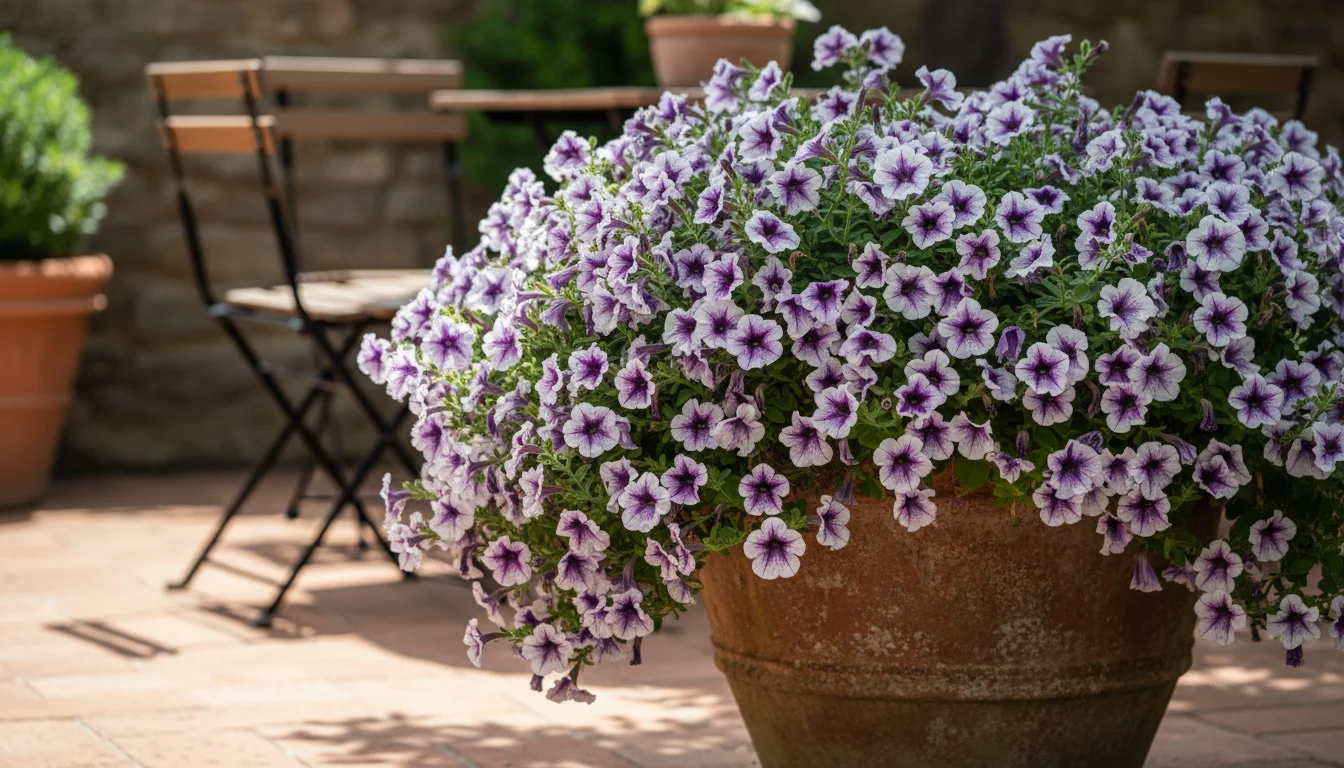
Top Performers: Flowers That Bloom All Summer in Containers
Choosing the right flowers for containers guarantees a season of continuous color. These resilient and prolific bloomers are known for their ability to thrive in pots, making them perfect for balcony flowers and other small-space solutions. Each offers unique charm and specific care requirements, but all deliver stunning summer blooms.
-
Petunia (Petunia x hybrida)
Petunias are classic summer bloomers, adored for their trumpet-shaped flowers and trailing habit. They come in an incredible array of colors, from pure whites and yellows to vibrant reds, purples, and even bicolors. Some varieties offer single blooms, while others boast double, ruffled petals. The ‘Wave’ series and ‘Supertunia’ varieties are particularly popular for containers due to their vigorous, spreading growth that cascades beautifully over pot edges, creating a lush, overflowing look. Petunias love full sun, needing at least six hours daily to produce their best show. They prefer well-draining soil and consistent moisture, but avoid overwatering, which can lead to root rot. Regular deadheading, pinching off spent flowers, encourages continuous blooming. Some newer varieties are “self-cleaning,” meaning they shed spent blooms naturally, reducing your maintenance. Fertilize every two to four weeks with a balanced liquid fertilizer to support their extensive flowering.
-
Calibrachoa (Million Bells, Calibrachoa x hybrida)
Often mistaken for miniature petunias, Calibrachoa produce hundreds of small, bell-like flowers that truly live up to their “Million Bells” moniker. They offer a slightly more refined appearance than petunias and come in an equally impressive range of colors. Calibrachoa are excellent for hanging baskets and containers, forming dense mounds or trailing gracefully. They thrive in full sun and well-draining potting mix. Unlike some petunias, Calibrachoa are generally self-cleaning, requiring no deadheading, making them incredibly low-maintenance. They do appreciate consistent moisture, but like petunias, they suffer from soggy soil. Fertilize regularly, perhaps every two weeks, with a balanced liquid feed to fuel their prolific blooming. They can be sensitive to iron deficiencies, which sometimes show as yellowing leaves between green veins; a specific iron supplement can correct this.
-
Geranium (Pelargonium x hortorum)
Often referred to as Zonal Geraniums, these plants are traditional container favorites. They boast large, rounded clusters of flowers in shades of red, pink, white, and coral, held above distinctive, often variegated, foliage. Geraniums offer a tidy, upright habit, making them ideal for mixed container plantings or as standalone specimens. They demand full sun and excellent drainage. While they tolerate some dry spells, consistent moisture promotes the best flowering. Avoid overhead watering, which can lead to fungal diseases on their leaves. Deadhead faithfully by snapping off spent flower stalks at their base; this stimulates the plant to produce more blooms. Feed every three to four weeks with a fertilizer formulated for flowering plants. Geraniums are surprisingly resilient and can often be overwintered indoors in cooler climates, bringing even more value to your summer display.
-
Verbena (Verbena x hybrida)
Verbena is a fantastic choice for containers, particularly the trailing varieties. They produce clusters of small, brightly colored flowers in shades of purple, pink, red, and white. Their mounding and cascading habit makes them perfect for spilling over the edges of pots or filling gaps in a mixed planting. Verbena prefers full sun and well-draining soil. They are generally quite drought-tolerant once established, making them a good choice for busy gardeners, but they perform best with consistent moisture. Deadheading older varieties helps encourage new blooms, though many modern hybrids are self-cleaning. Fertilize every four to six weeks. Verbena also acts as a magnet for pollinators, bringing bees and butterflies to your balcony flowers. Their hardiness and continuous flowering make them a robust option for summer-long color.
-
Lantana (Lantana camara)
Lantana delivers a vibrant splash of color with its clusters of tiny flowers that often change color as they mature, creating a multi-hued effect. You find them in striking combinations of yellow, orange, red, pink, and purple. Lantana thrives in full, hot sun and tolerates drought exceptionally well once established, making it a stellar choice for scorching summer conditions. It prefers well-draining soil and does not appreciate overly rich soil, which can encourage foliage over flowers. Lantana is relatively low-maintenance, requiring only occasional pruning to maintain shape and promote bushier growth. While not strictly necessary, some light deadheading can encourage more abundant blooms. It is also highly attractive to butterflies and hummingbirds, adding dynamic life to your container garden. Be aware that all parts of the lantana plant are considered toxic if ingested, so position it carefully if you have pets or small children.
-
Portulaca (Moss Rose, Portulaca grandiflora)
For gardeners in hot, dry climates, Portulaca is an absolute superstar. These cheerful plants produce cup-shaped, brightly colored flowers that resemble miniature roses, appearing in shades of red, orange, yellow, pink, and white. Their succulent-like foliage helps them conserve water, making them incredibly drought-tolerant. Portulaca demands full, intense sun; the flowers often close on cloudy days or in the shade. They thrive in lean, well-draining soil and practically laugh at heat and humidity. These plants are ideal for containers that tend to dry out quickly or for gardeners who prefer less frequent watering. Portulaca generally requires no deadheading, as new blooms quickly replace spent ones. They are largely fuss-free and provide a carpet of vivid summer blooms with minimal effort. Their low-growing, spreading habit makes them excellent “filler” or “spiller” plants in a container arrangement.
-
Begonia (Wax Begonia, Begonia semperflorens and Tuberous Begonia, Begonia tuberhybrida)
Begonias offer versatility, with options for both sun and shade. Wax Begonias (Begonia semperflorens) feature waxy, often bronze-tinged leaves and small, continuous flowers in pink, red, or white. They tolerate full sun in cooler climates or partial shade in hotter regions, making them adaptable flowers for containers. They prefer consistently moist, well-draining soil and do not require deadheading. Tuberous Begonias (Begonia tuberhybrida) produce larger, more dramatic blooms in an astounding range of colors, often resembling roses or camellias. These are typically shade-loving, making them perfect for north-facing balconies or shaded patios. They need consistently moist, but never soggy, soil and benefit from regular feeding. Both types of Begonias provide reliable, long-lasting summer blooms, with the Tuberous varieties offering a touch of sophisticated elegance to shaded spots.
-
Zinnia (Zinnia elegans)
While often grown in garden beds, compact Zinnia varieties excel in containers. They come in a spectacular range of sizes, shapes, and colors, from dainty ‘Profusion’ series (which are excellent for containers due to their compact, disease-resistant nature and continuous bloom) to more upright types. Zinnias are absolute sun worshippers, requiring full sun to flourish. They prefer well-draining soil and benefit from consistent moisture, though they tolerate some dry periods. Deadheading is crucial for continuous summer blooms, as it encourages the plant to produce more flowers rather than setting seed. Zinnias are incredibly attractive to butterflies, making them a joyful addition to any sunny balcony or patio. Fertilize every three to four weeks to support their prolific flowering. Their cheerful, daisy-like flowers bring a burst of classic garden charm to your small space.
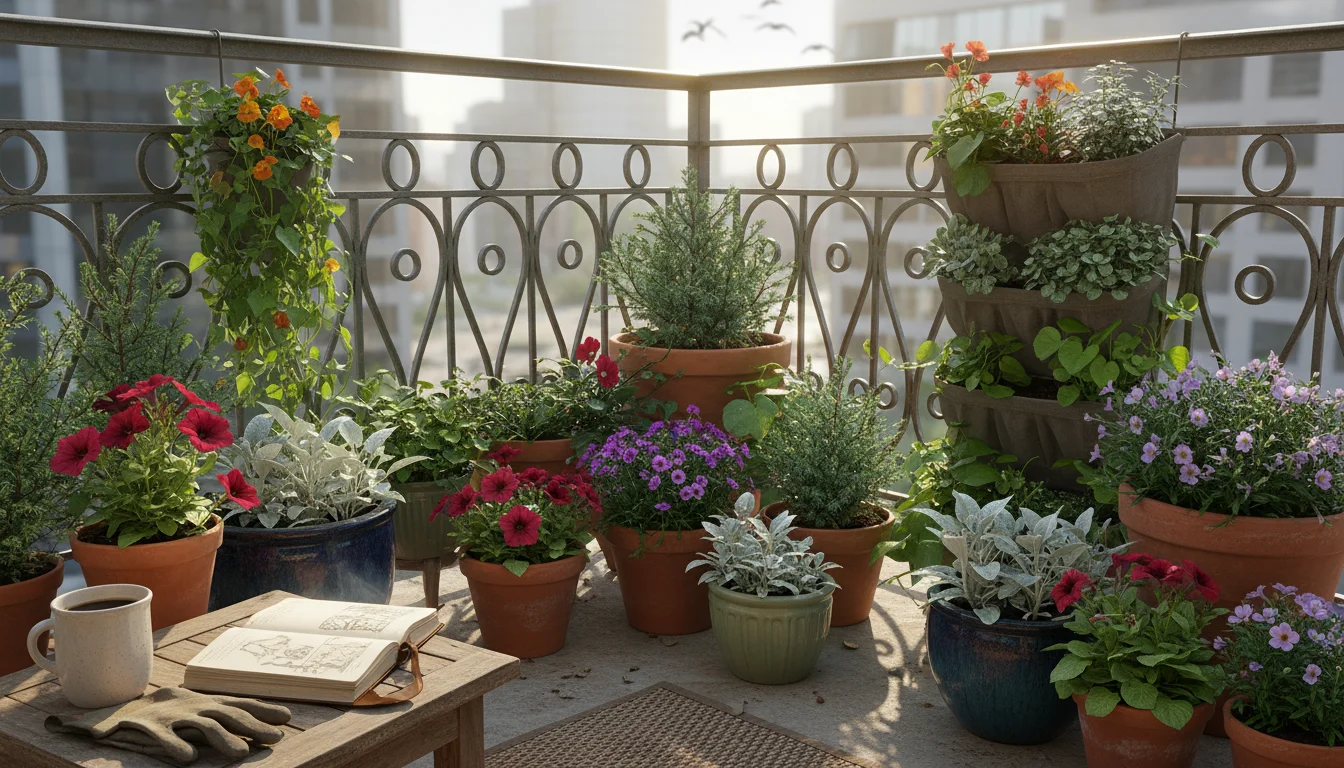
Designing Your All-Season Container Displays
Creating visually appealing container gardens involves more than simply choosing beautiful flowers. Thoughtful design elevates a collection of pots into a cohesive, stunning display that offers continuous interest. You can achieve this by applying a few key design principles, focusing on color, texture, and plant structure.
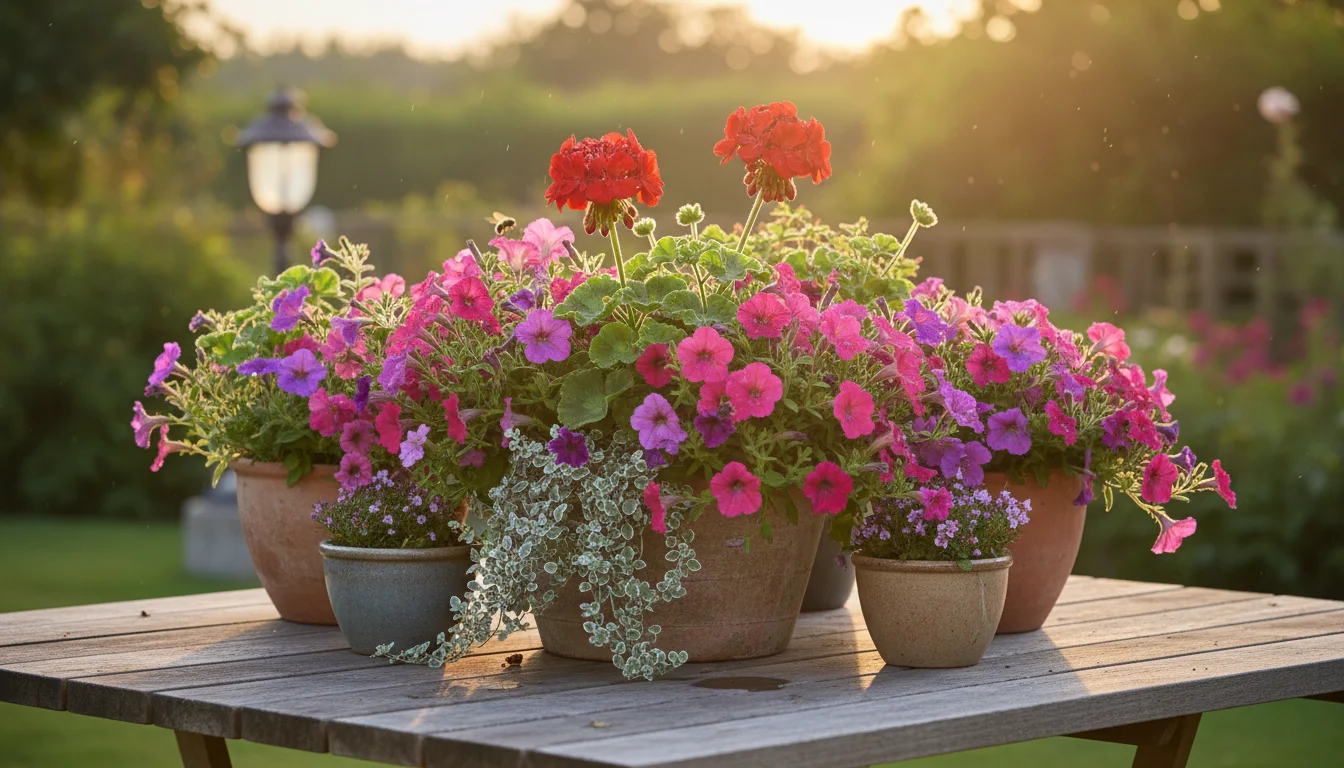
The “Thriller, Filler, Spiller” Concept
This popular design guideline helps you create balanced and dynamic container arrangements. It ensures your pot has height, fullness, and graceful overflow.
- Thriller: This is your focal point, the tallest and most dramatic plant in the container. It adds vertical interest and draws the eye upward. Good thrillers for summer blooms include upright geraniums, salvia, or even compact ornamental grasses for texture.
- Filler: These plants are medium-height and round out the container, filling the space around the thriller. They add volume and mass, often with complementary colors or textures. Petunias, calibrachoa, zinnias, and compact verbenas work wonderfully as fillers.
- Spiller: These plants cascade over the edge of the container, softening its lines and connecting the display to the ground or surface below. They add a touch of elegance and visual flow. Trailing petunias, calibrachoa, sweet potato vine (though not a flower, it offers fantastic foliage), and creeping jenny are excellent spillers.
By combining these three elements, you create a complete, well-rounded composition that looks full and vibrant from all angles.
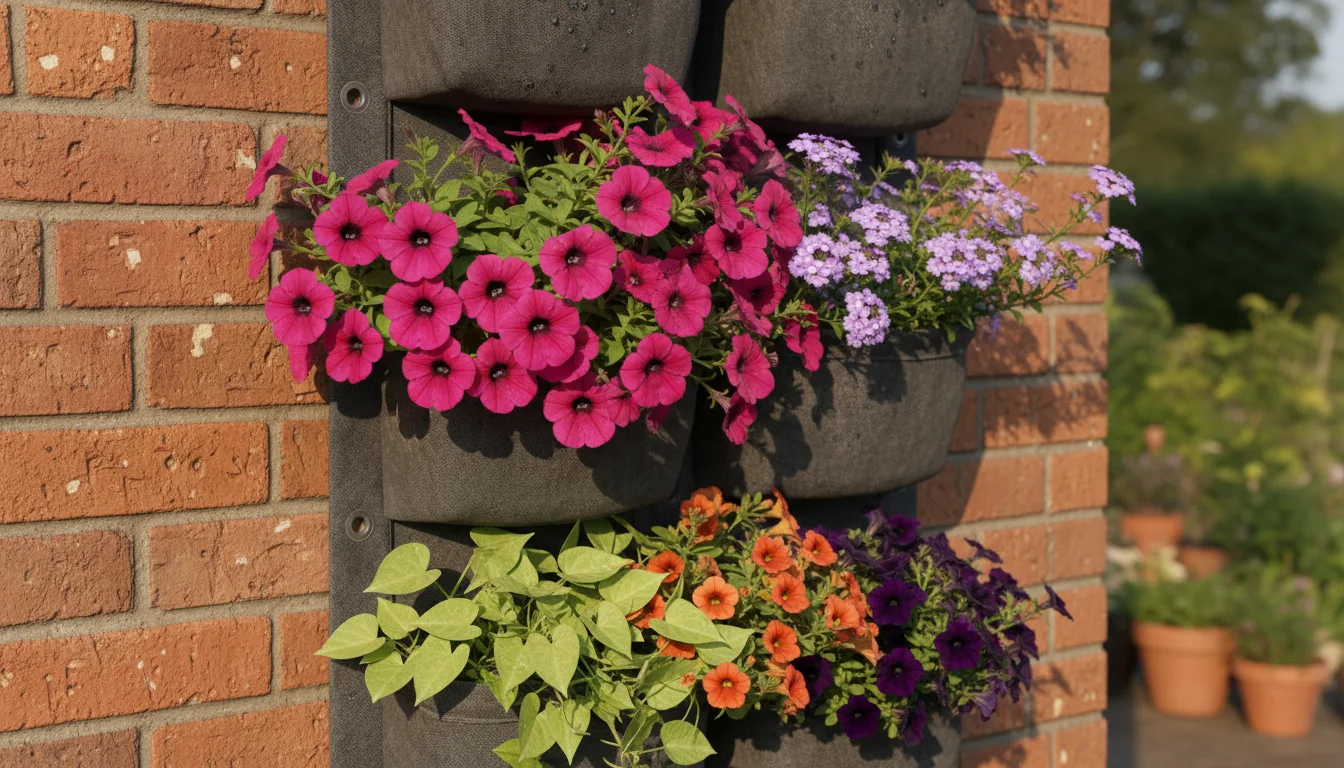
Color Harmonies and Contrasts
Color plays a significant role in setting the mood of your container garden. You can opt for harmonious color schemes, using shades that are next to each other on the color wheel, such as blues, purples, and pinks. This creates a calming and unified look. For instance, combining lavender verbena with purple petunias and blue calibrachoa results in a soothing, cohesive display.
Alternatively, you might choose contrasting colors, such as orange and blue, or yellow and purple, to create a bold, energetic statement. A pot with bright orange lantana, deep purple verbena, and some chartreuse sweet potato vine would offer a striking visual impact. Consider your home’s exterior colors and the overall feel of your outdoor space when making your color choices. Remember, green foliage acts as a neutral, providing a restful backdrop for any bloom color.
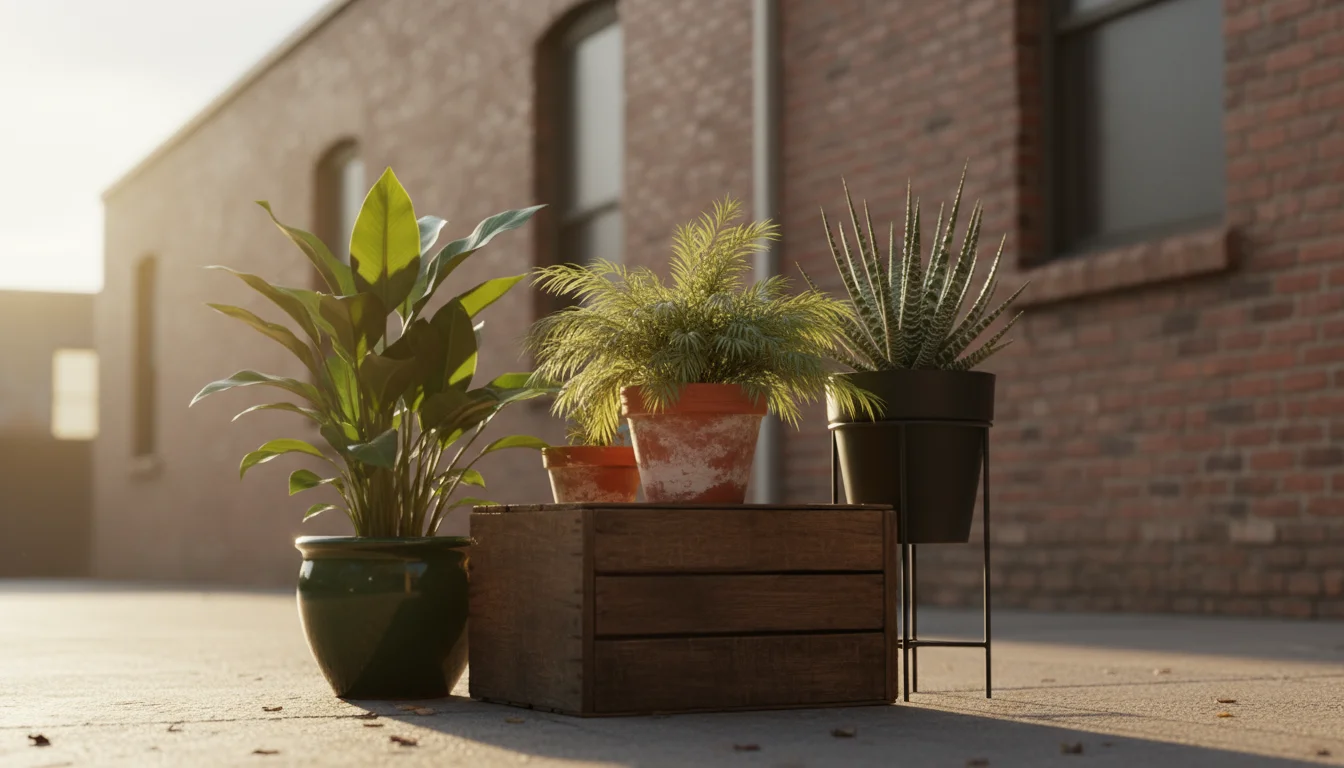
Texture and Form
Beyond color, consider the texture and form of your plants. Texture refers to how a plant’s leaves or flowers feel or appear visually, from delicate and feathery to bold and coarse. Mixing different textures adds depth and interest to your container. For example, the fine foliage of a calibrachoa contrasts beautifully with the broader leaves of a geranium.
Form refers to the overall shape and growth habit of a plant. Upright forms (thrillers), mounding forms (fillers), and trailing forms (spillers) all contribute to the container’s structure. Varying these forms creates a dynamic display that captures attention. Some plants offer unique flower shapes, like the intricate blooms of a zinnia or the simpler bells of a calibrachoa, further enhancing visual diversity. Thoughtful selection of textures and forms transforms your simple arrangement into a sophisticated garden statement.
When designing, always consider the mature size of your plants. Give them enough room to grow without becoming overcrowded, which can lead to poor air circulation and increased disease risk. Plan your design to accommodate their growth throughout the summer for enduring beauty.
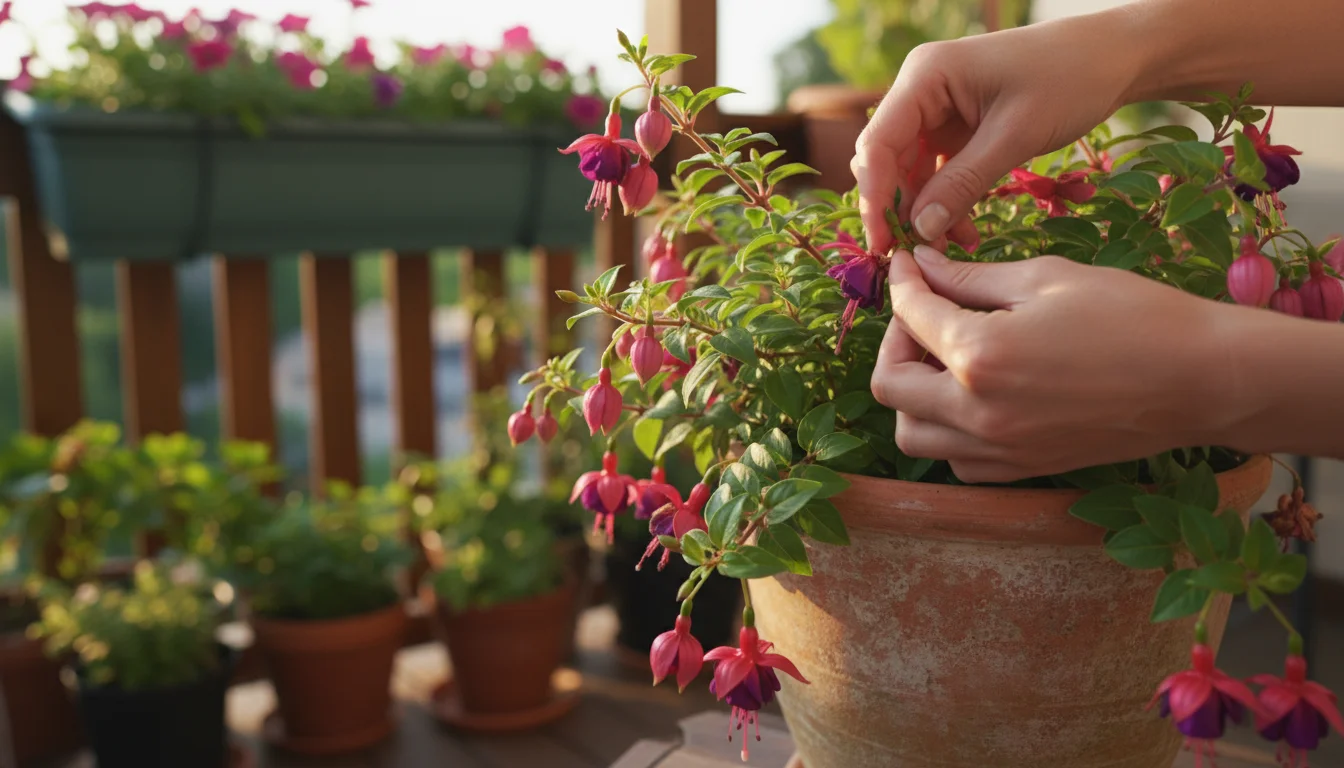
Watering, Feeding, and Deadheading for Non-Stop Blooms
Achieving a season-long display of summer blooms in containers requires consistent care. Three essential practices, watering, feeding, and deadheading, directly impact your plants’ health and their ability to produce flowers continuously. Master these techniques, and your container garden will flourish.
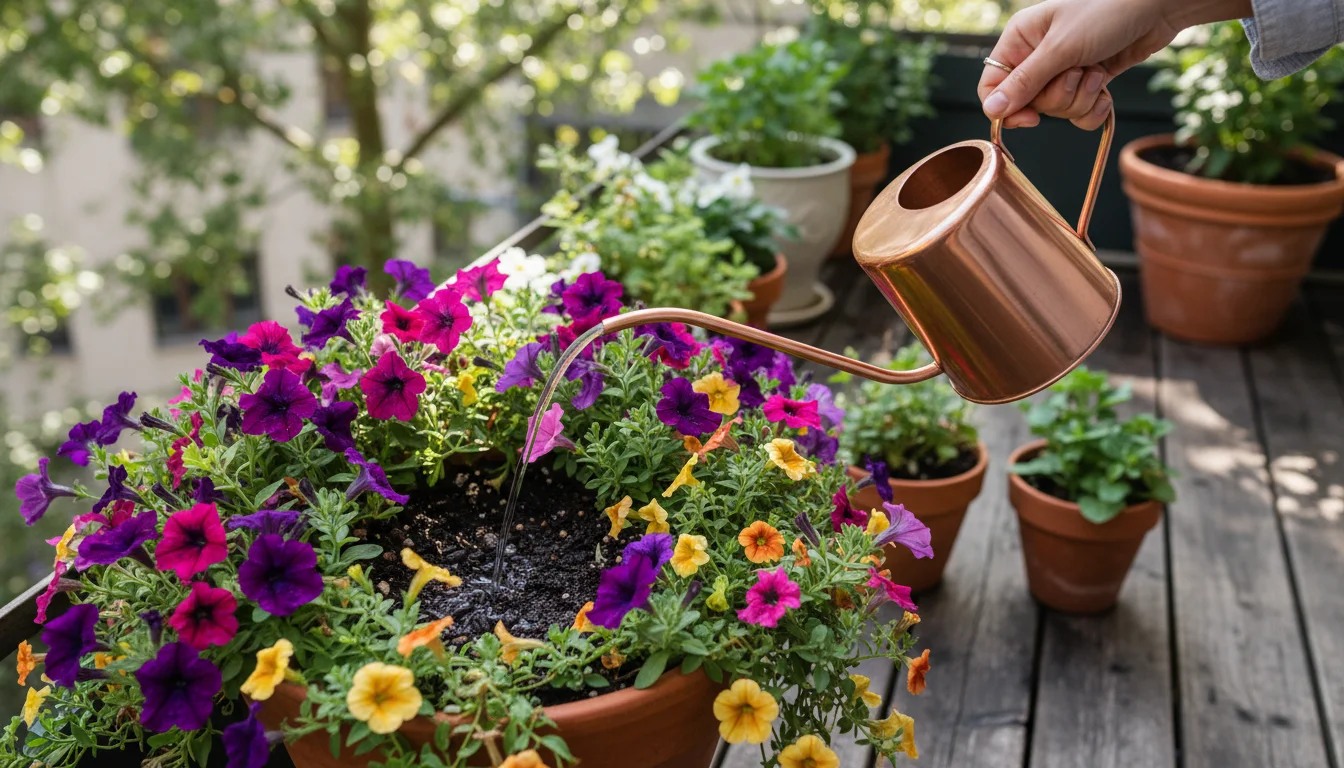
Precise Watering Techniques
Watering is perhaps the most critical task for container plants. Because pots dry out faster than garden beds, consistent moisture is vital. However, overwatering is equally detrimental, leading to root rot. You must find the right balance.
To determine when to water, do not rely solely on the surface of the soil. Instead, stick your finger about two inches deep into the potting mix. If it feels dry at that depth, it is time to water. If it still feels moist, wait. Another method involves lifting the pot; a light pot indicates it is dry.
When you water, do so thoroughly until water drains from the bottom holes of the container. This ensures moisture reaches all the roots. Avoid frequent, shallow watering, as this encourages shallow root development, making plants more susceptible to drought. Water early in the morning or late in the afternoon to minimize evaporation. In the peak of summer, sun-loving plants in smaller containers may need watering daily, sometimes even twice a day during heatwaves. Shade-loving plants generally require less frequent watering. Adjust your schedule based on weather conditions, plant size, and container material.
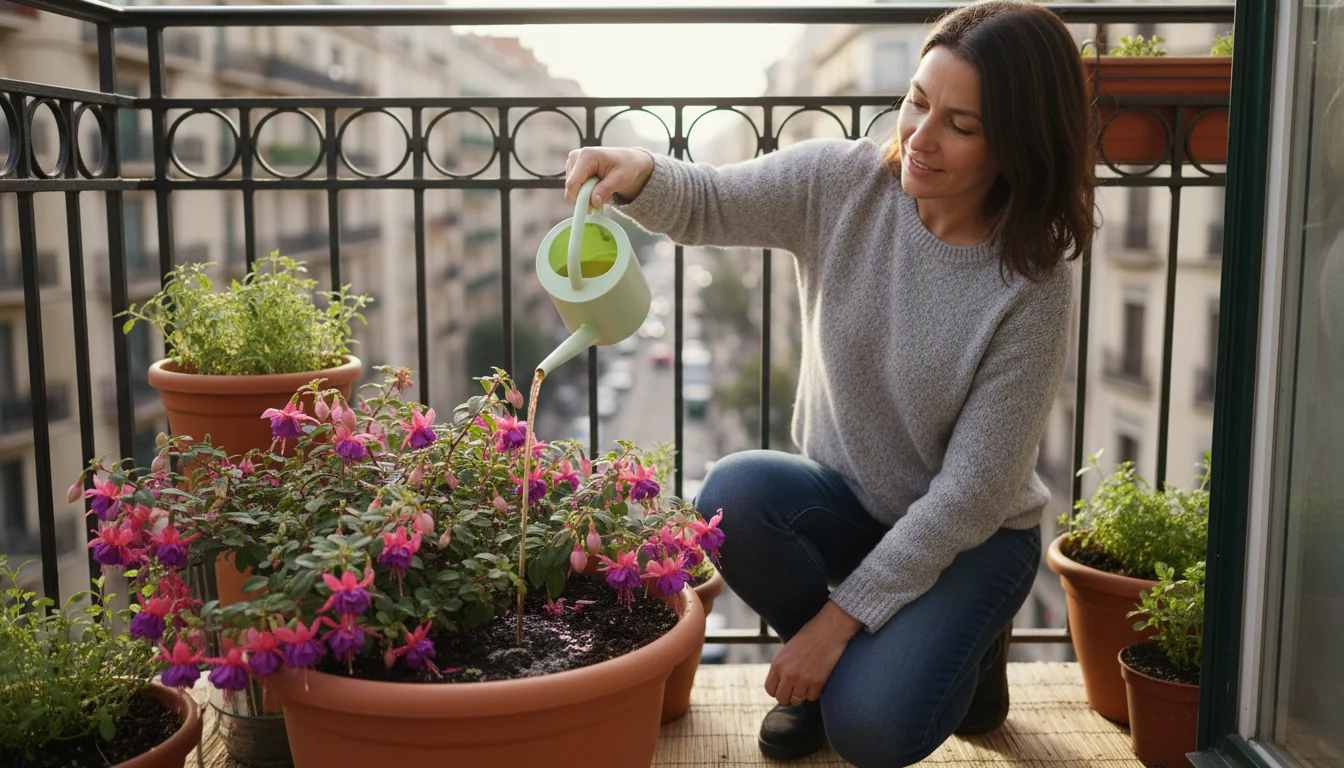
Effective Feeding Strategies
Flowering plants in containers are heavy feeders. With each watering, nutrients leach out of the potting mix, so you must replenish them regularly. A good quality potting mix often contains some slow-release fertilizer, providing initial nutrition. However, for continuous summer blooms, you need supplemental feeding.
Start with a balanced liquid fertilizer, perhaps a 10-10-10 or 20-20-20 formula, applied every two to four weeks. As plants mature and begin to bloom prolifically, switch to a fertilizer higher in phosphorus (the middle number) to promote flower production, such as a 15-30-15 blend. Always follow the manufacturer’s instructions for dilution rates. Over-fertilizing can burn roots and damage plants. For a more hands-off approach, you can incorporate slow-release granular fertilizers into the potting mix at the beginning of the season. These products release nutrients gradually over several months, reducing the frequency of liquid feeding. Even with slow-release options, liquid feeding might still be beneficial mid-season to give a quick boost to struggling or exceptionally prolific plants.
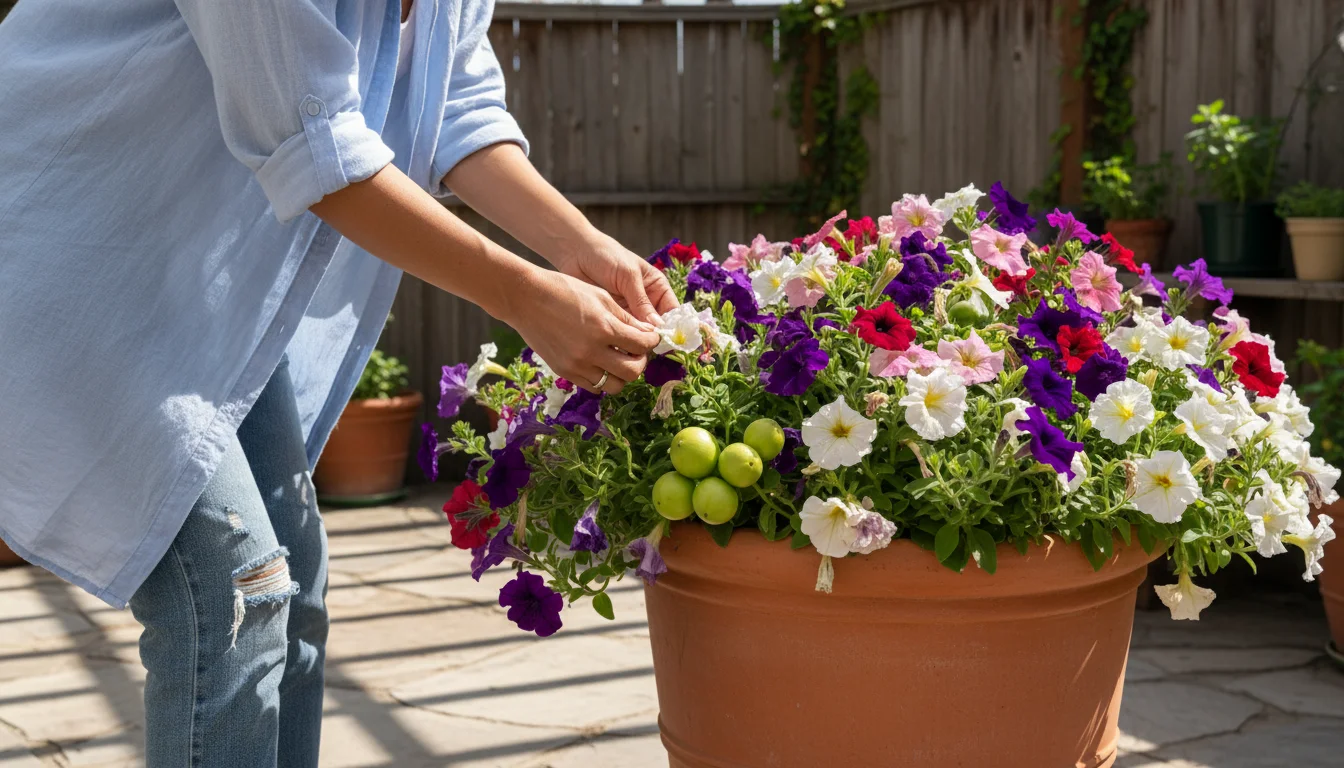
The Art of Deadheading
Deadheading, the removal of spent or fading flowers, is crucial for encouraging plants to produce more summer blooms. When a flower fades, the plant typically shifts its energy from producing more flowers to forming seeds. By removing these spent blooms, you trick the plant into thinking it has not yet completed its reproductive cycle, compelling it to produce more flowers in an attempt to set seed.
For most plants, simply pinch or snip off the faded flower head just above the first set of healthy leaves or buds. For plants with flower stalks, like geraniums, remove the entire stalk down to the base of the plant. Some modern plant varieties are “self-cleaning,” meaning they naturally drop their spent flowers and do not require manual deadheading. Calibrachoa and some petunia varieties fall into this category, significantly reducing your maintenance time. However, for most traditional flowers for containers, regular deadheading, ideally every few days, ensures a continuous display of fresh, vibrant blooms throughout the entire summer. This simple practice truly maximizes the flowering potential of your plants.
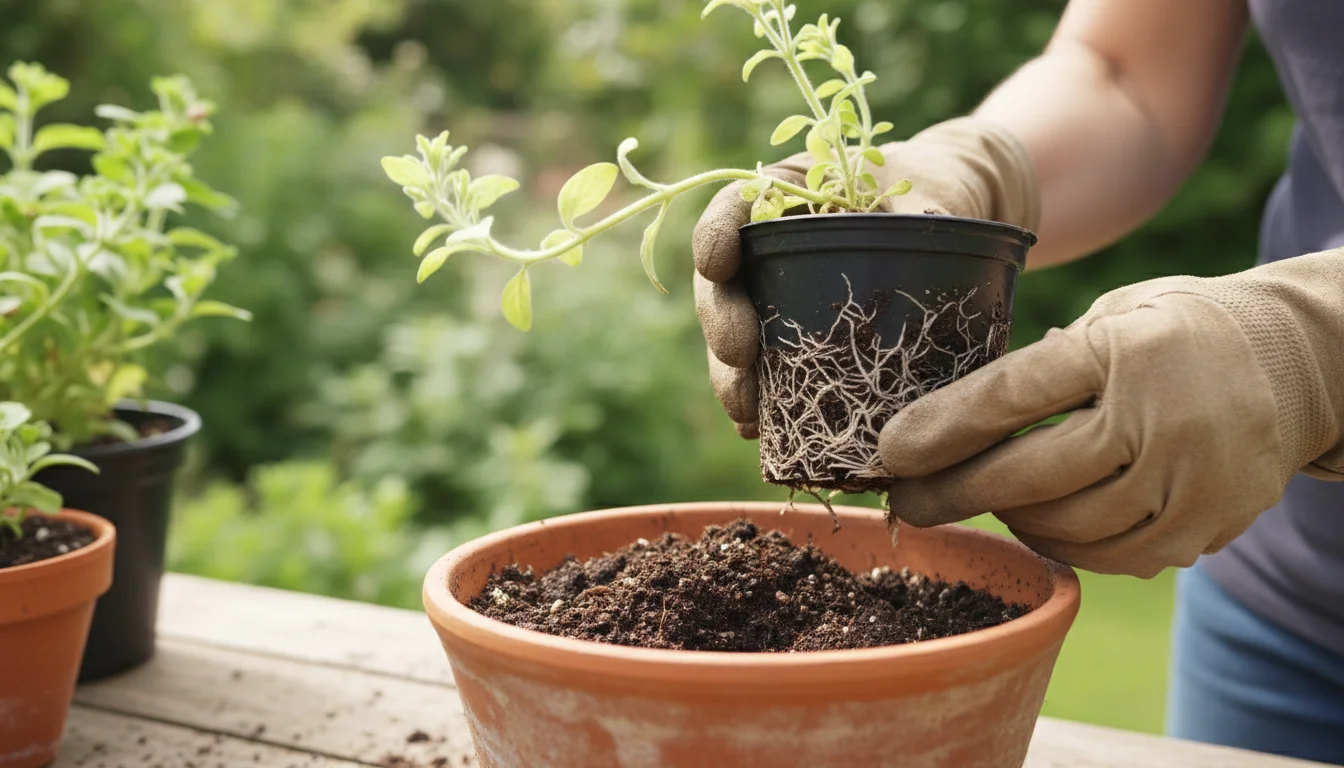
Common Challenges and Easy Fixes in Container Gardening
Even with the best intentions, container gardeners sometimes face challenges. Identifying and addressing these issues promptly ensures your summer blooms remain vibrant and healthy. Here are some common problems and practical solutions.
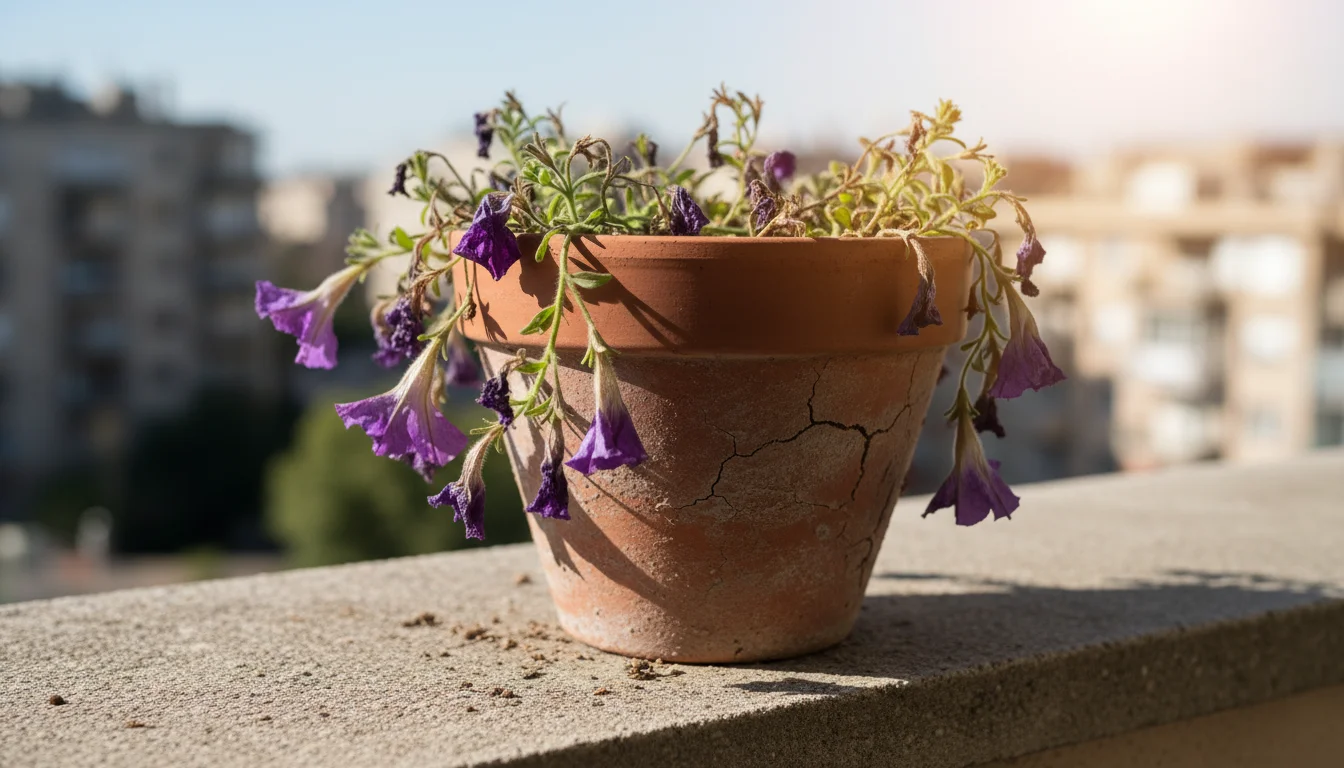
Wilting Plants
Wilting is often the first sign of distress in container plants.
-
Problem: Underwatering. Containers dry out quickly, especially in hot, windy weather. If the soil is bone dry, lack of water is the likely culprit.
Fix: Water thoroughly until water drains from the bottom. If the potting mix is so dry it repels water, try placing the entire pot in a basin of water for 30 minutes to allow the soil to rehydrate from the bottom up. Increase watering frequency during heatwaves.
-
Problem: Overwatering/Poor Drainage. Paradoxically, overwatering can also cause wilting because waterlogged roots cannot take up oxygen or water effectively. If the soil is constantly soggy and smells foul, this is your issue.
Fix: Check your container’s drainage holes. Ensure they are clear. Repot the plant with fresh, well-draining potting mix if the situation is severe, trimming off any slimy, black roots (root rot). Adjust your watering schedule to allow the top two inches of soil to dry out between waterings.
-
Problem: Heat Stress. Extreme heat can cause plants to wilt temporarily, even with adequate water, as they try to conserve moisture.
Fix: Move the container to a shadier spot during the hottest part of the day, or provide temporary shade. Ensure the plant is well-watered. Some plants naturally “flag” in the afternoon sun and perk up in the evening.
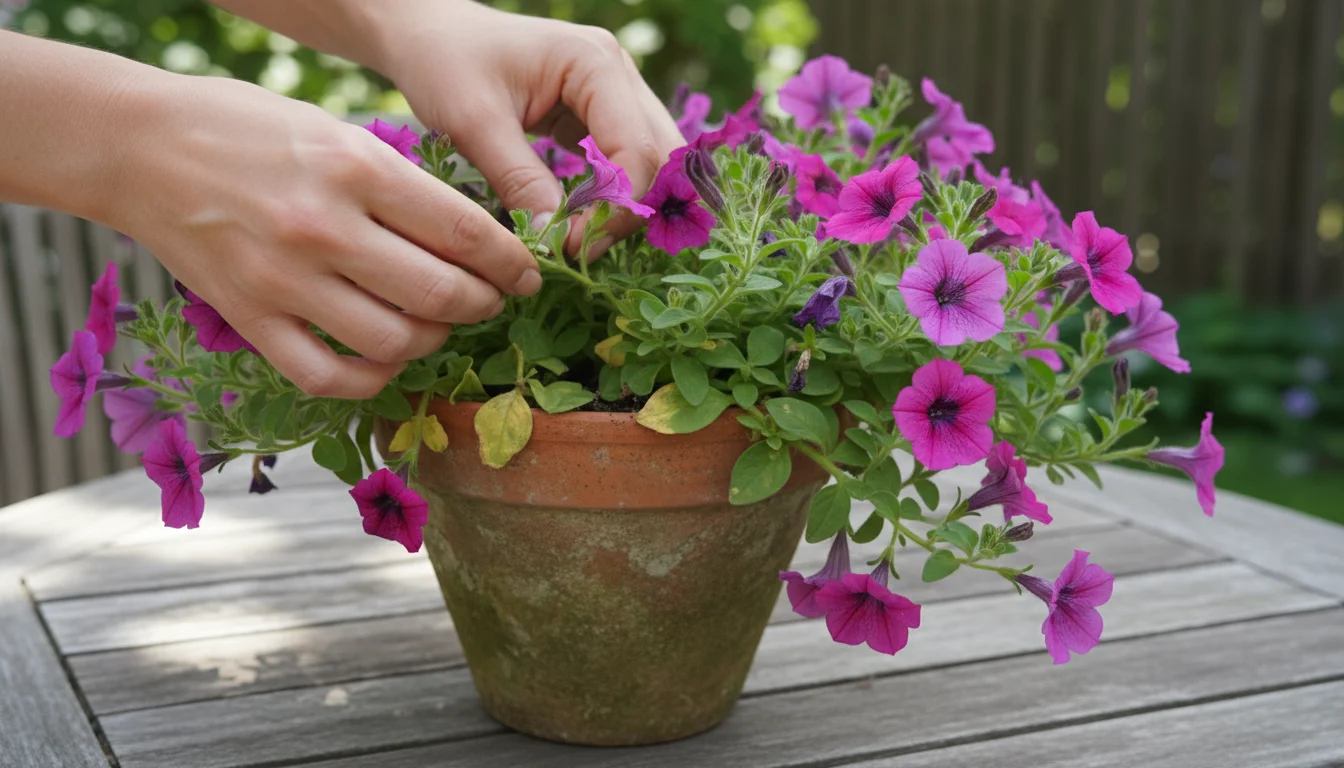
Yellowing Leaves
Yellowing leaves can indicate several issues, often nutrient-related.
-
Problem: Nutrient Deficiency. Container plants deplete nutrients quickly. Yellowing on older, lower leaves often points to nitrogen deficiency. Overall pale yellowing can indicate a general lack of nutrients.
Fix: Implement a regular feeding schedule using a balanced liquid fertilizer. For specific deficiencies, consider a fertilizer formulated for flowering plants that provides micronutrients. Calibrachoa, for example, often shows interveinal yellowing (yellow leaves with green veins) due to iron deficiency, requiring an iron supplement.
-
Problem: Overwatering. Just like wilting, consistently soggy soil can also cause leaves to yellow and drop.
Fix: See the solution for overwatering under wilting plants. Improve drainage and reduce watering frequency.
-
Problem: Pest Infestation. Sucking insects, such as aphids or spider mites, can cause leaves to yellow and distort.
Fix: Inspect plants regularly. If pests are present, treat with insecticidal soap or neem oil. A strong spray of water can dislodge many soft-bodied pests.
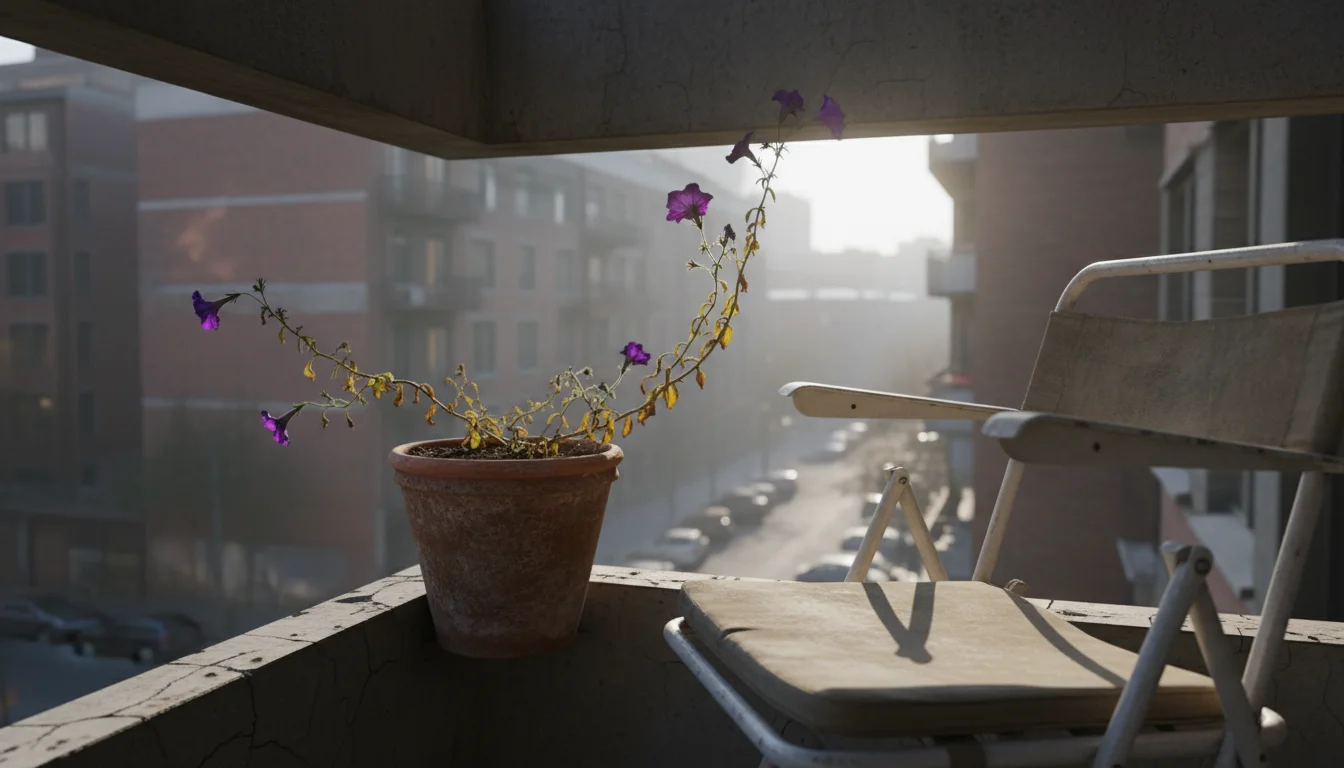
Lack of Blooms or Leggy Growth
If your plants are growing lots of leaves but few flowers, or stretching out sparsely, it is time for intervention.
-
Problem: Insufficient Sunlight. Most summer bloomers need full sun. Inadequate light results in weak, stretched stems reaching for light, with minimal flowering.
Fix: Move your container to a location that receives at least six hours of direct sunlight per day. Rotate the pot occasionally to ensure all sides receive light.
-
Problem: Lack of Deadheading. Plants that are allowed to set seed will stop producing new flowers.
Fix: Religiously deadhead spent blooms. This redirects the plant’s energy into producing more flowers. Even self-cleaning varieties sometimes benefit from a tidy-up.
-
Problem: Too Much Nitrogen. Fertilizers high in nitrogen promote lush foliage growth at the expense of flowers.
Fix: Switch to a fertilizer with a higher phosphorus content (the middle number) to encourage blooming. Reduce the frequency of high-nitrogen feeds.
Addressing these common issues proactively maintains the health and beauty of your flowers for containers, ensuring a spectacular display of summer blooms all season long. Regular observation is your best tool for early detection and quick resolution.
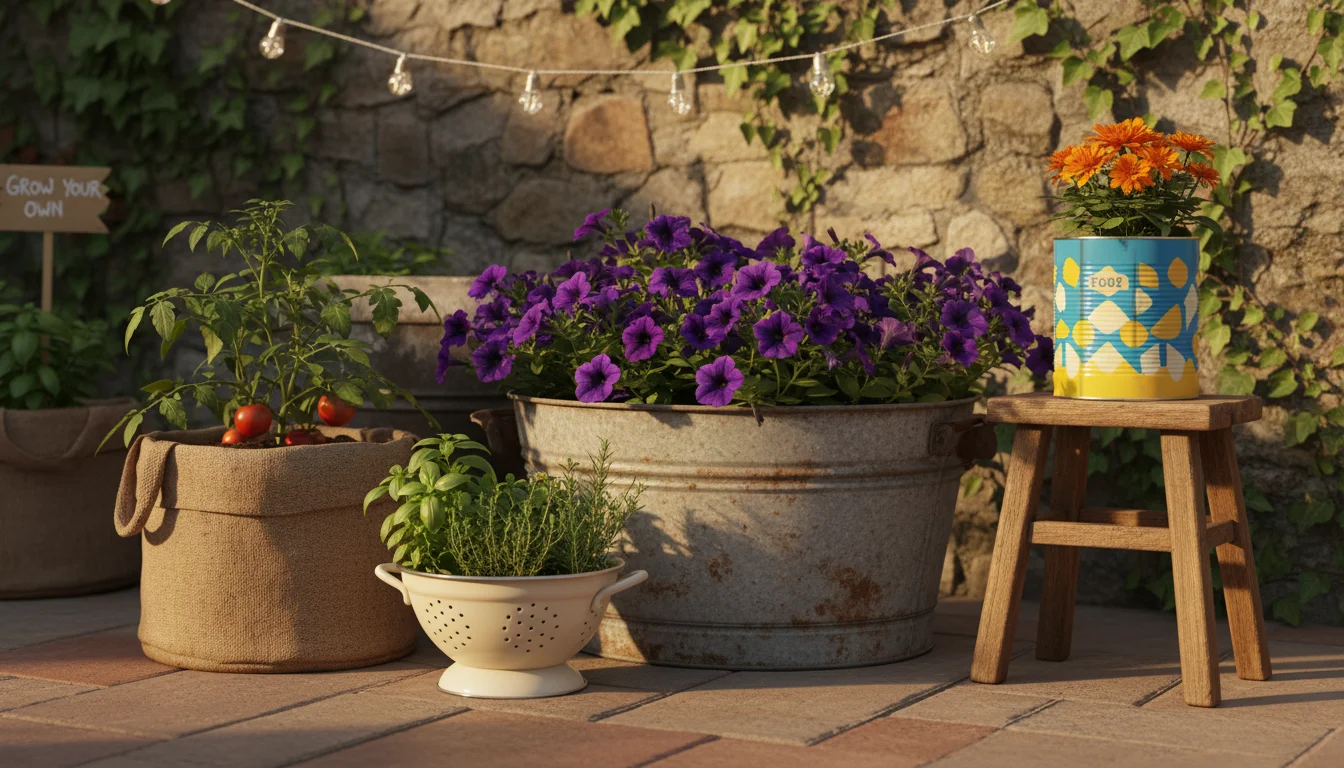
Eco-Friendly Container Gardening Practices
Your container garden, no matter how small, offers a fantastic opportunity to practice environmentally conscious gardening. Adopting eco-friendly habits benefits local ecosystems, conserves resources, and contributes to a healthier planet. As a supportive gardening coach, I encourage you to integrate these sustainable practices into your routine for your balcony flowers and all your summer blooms.
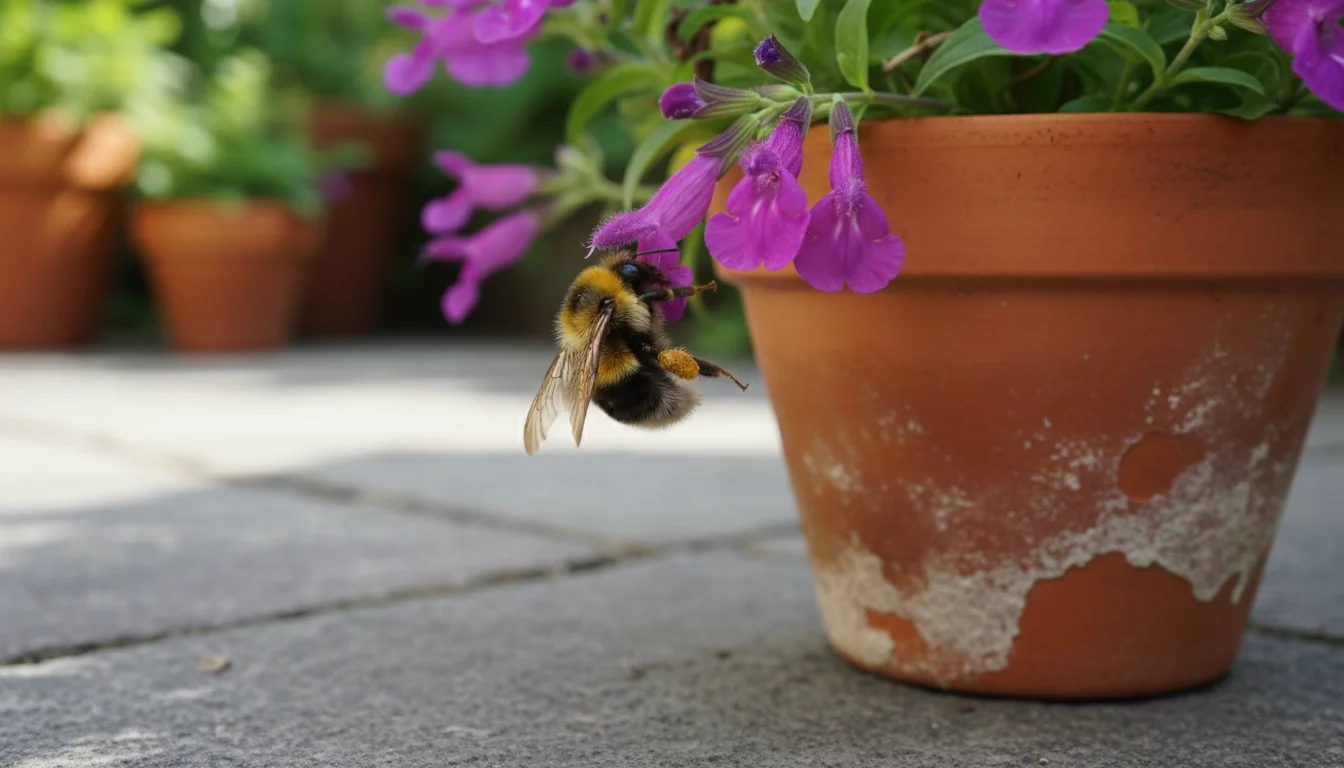
Attracting Pollinators
One of the most impactful eco-friendly actions you can take is to choose pollinator-friendly flowers. Bees, butterflies, and hummingbirds play a vital role in our ecosystems, and their populations face significant threats. By planting flowers that provide nectar and pollen, you create a mini-habitat in your small space. Many of the best flowers for containers that bloom all summer are excellent for pollinators, including Verbena, Lantana, Zinnia, and Petunia. Look for single-petal varieties, as double-petaled flowers often have less accessible nectar. Avoid pesticides, or use organic, targeted solutions only when absolutely necessary, to protect these beneficial insects. Offering a shallow dish of water with stones for landing also provides a crucial water source for pollinators.
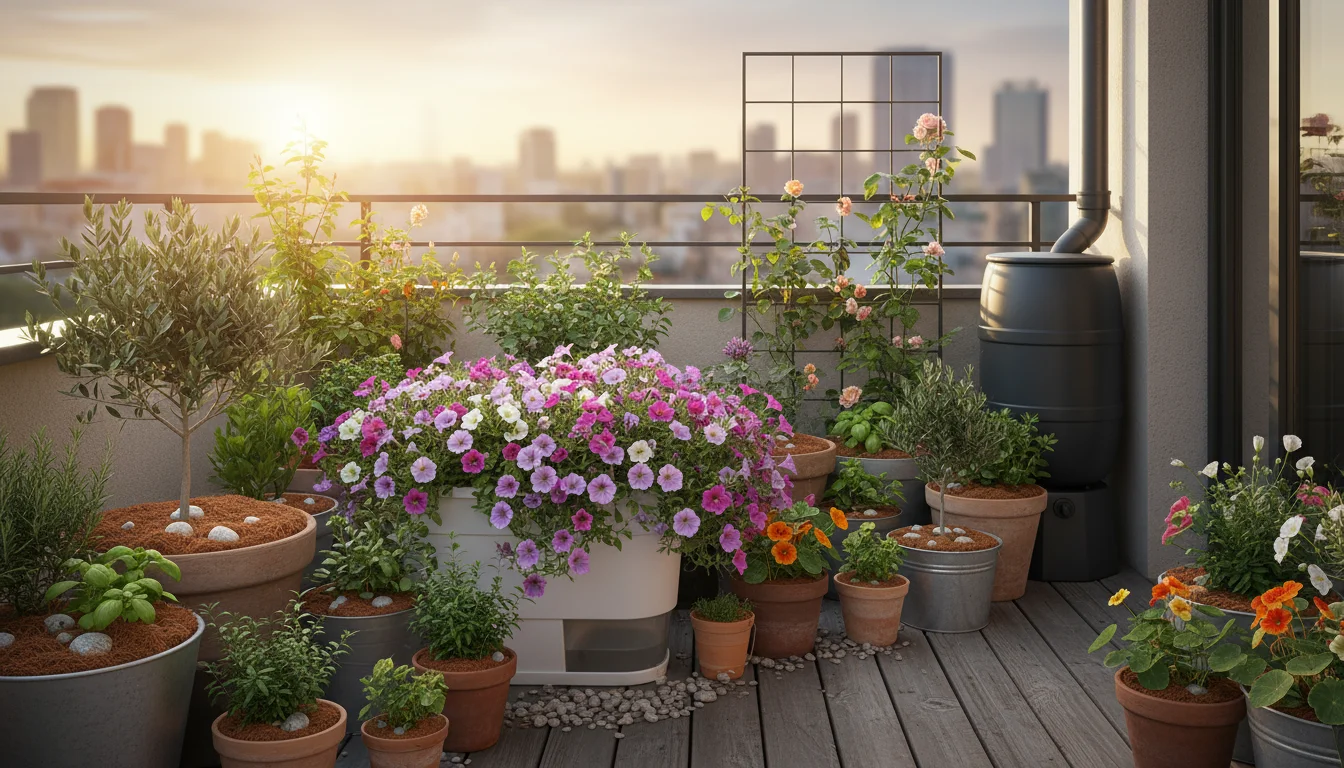
Water Conservation
Water is a precious resource. In container gardening, where plants can dry out quickly, efficient watering is crucial.
- Use self-watering planters: These containers have a reservoir at the bottom, reducing watering frequency and preventing evaporation.
- Add mulch: A layer of shredded bark, coco coir, or even decorative pebbles on top of your potting mix helps retain soil moisture, suppresses weeds, and keeps roots cooler.
- Group containers: Arranging pots closely together creates a microclimate, increasing humidity and reducing water loss from evaporation.
- Water efficiently: Water early in the morning or late in the evening to minimize evaporation. Water slowly and deeply until water drains from the bottom, ensuring roots get enough moisture.
- Collect rainwater: If feasible, set up a small rain barrel or simply place containers to catch rainwater, which is excellent for plants.
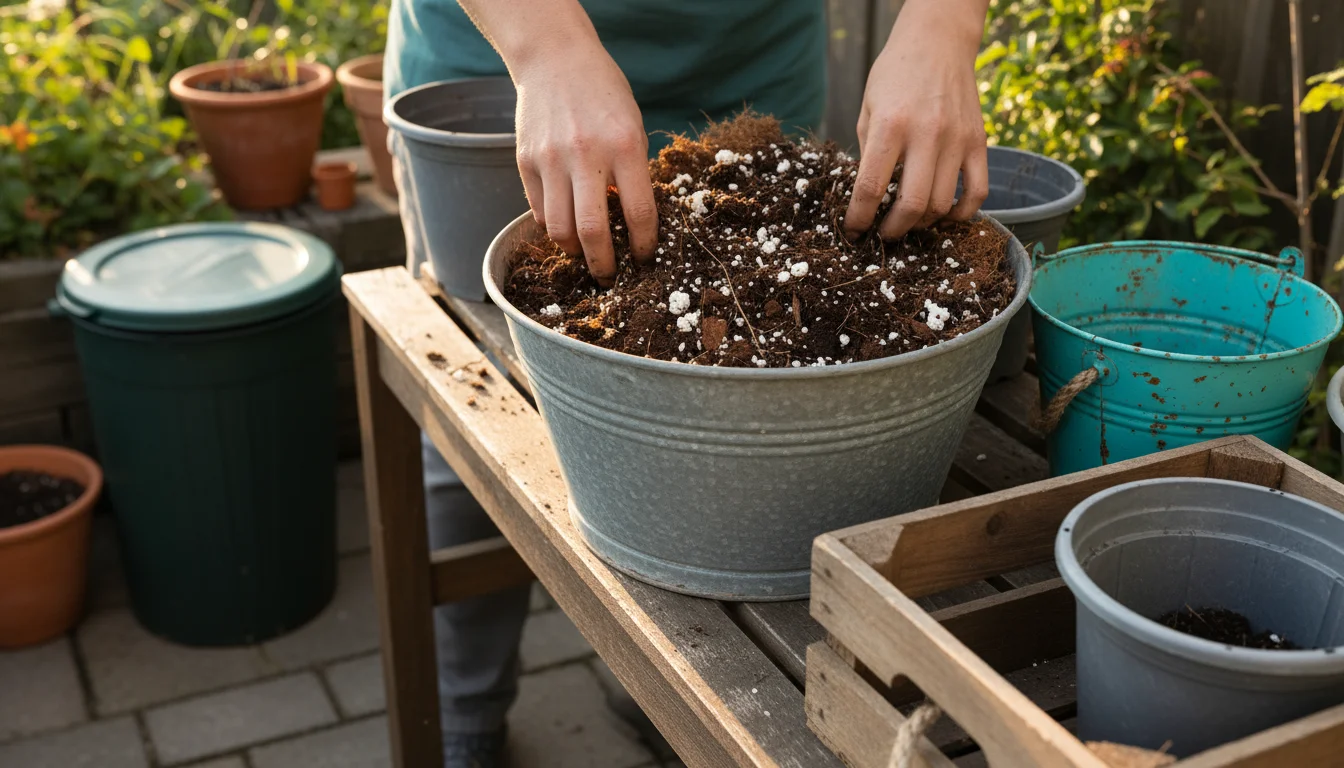
Sustainable Container and Potting Mix Choices
Make conscious choices about your containers and potting mix.
- Repurpose and recycle: Look for creative ways to repurpose items as planters, like old buckets, tires, or crates. When buying new, choose containers made from recycled materials or durable options that last for many seasons.
- Organic potting mix: Opt for potting mixes that are peat-free or use sustainably harvested peat. Look for mixes containing compost or other organic amendments. You can also make your own by mixing compost, coco coir, and perlite.
- Composting: Start a small composting system for kitchen scraps and spent plant material. This creates nutrient-rich compost that you can mix into your potting soil, reducing waste and improving soil health.
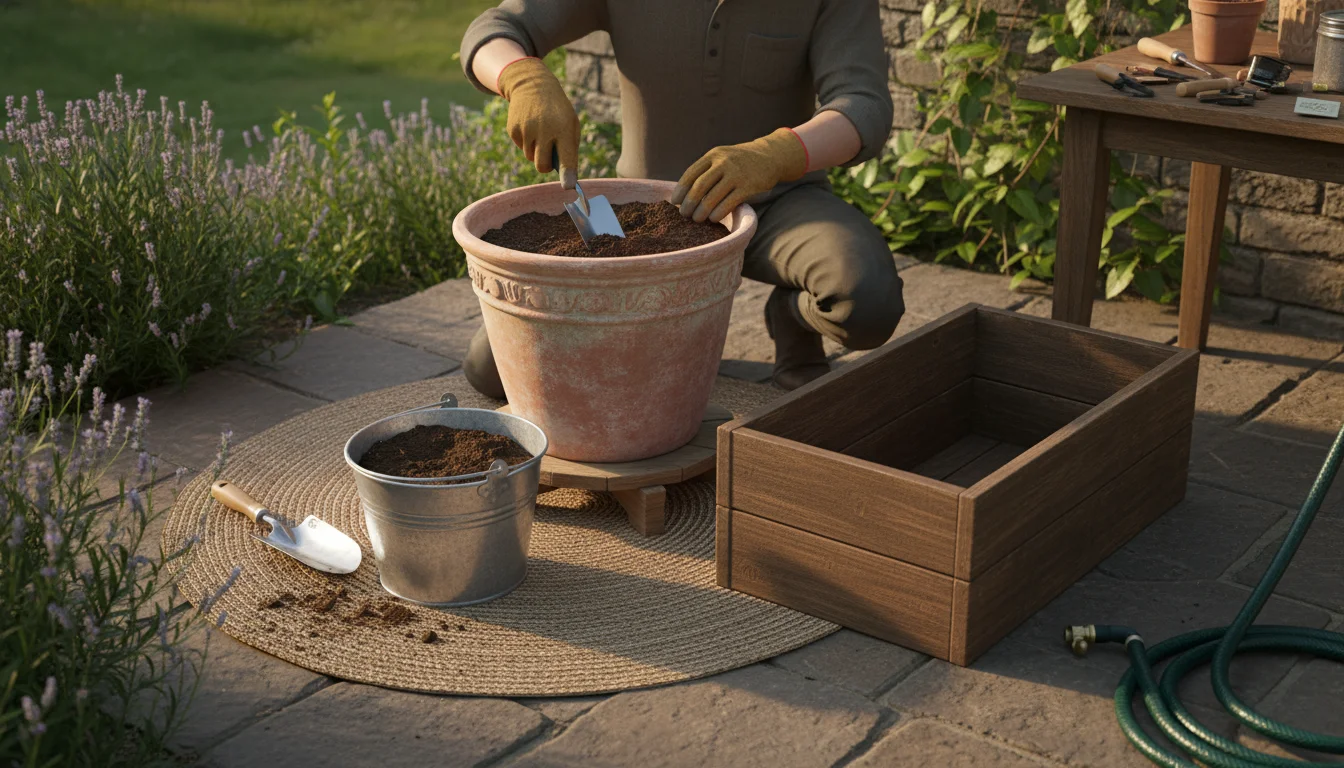
Reduce, Reuse, Recycle
Embrace the “reduce, reuse, recycle” philosophy in your container gardening.
- Reduce reliance on new plastic: Choose terracotta, ceramic, wood, or metal containers where possible, or high-quality, long-lasting plastic.
- Reuse potting mix: If your plants were healthy, you can often reuse potting mix from previous seasons. Just replenish it with fresh compost and a slow-release fertilizer to revitalize its nutrient content. If plants showed signs of disease, discard the old mix.
- Recycle plant tags and plastic trays: Many garden centers now offer recycling programs for plastic nursery pots and trays. Check with your local facilities.
By integrating these eco-friendly practices, your container garden becomes not just a source of beauty but also a testament to your commitment to a sustainable lifestyle. You will enjoy your vibrant summer blooms even more, knowing you support the environment.
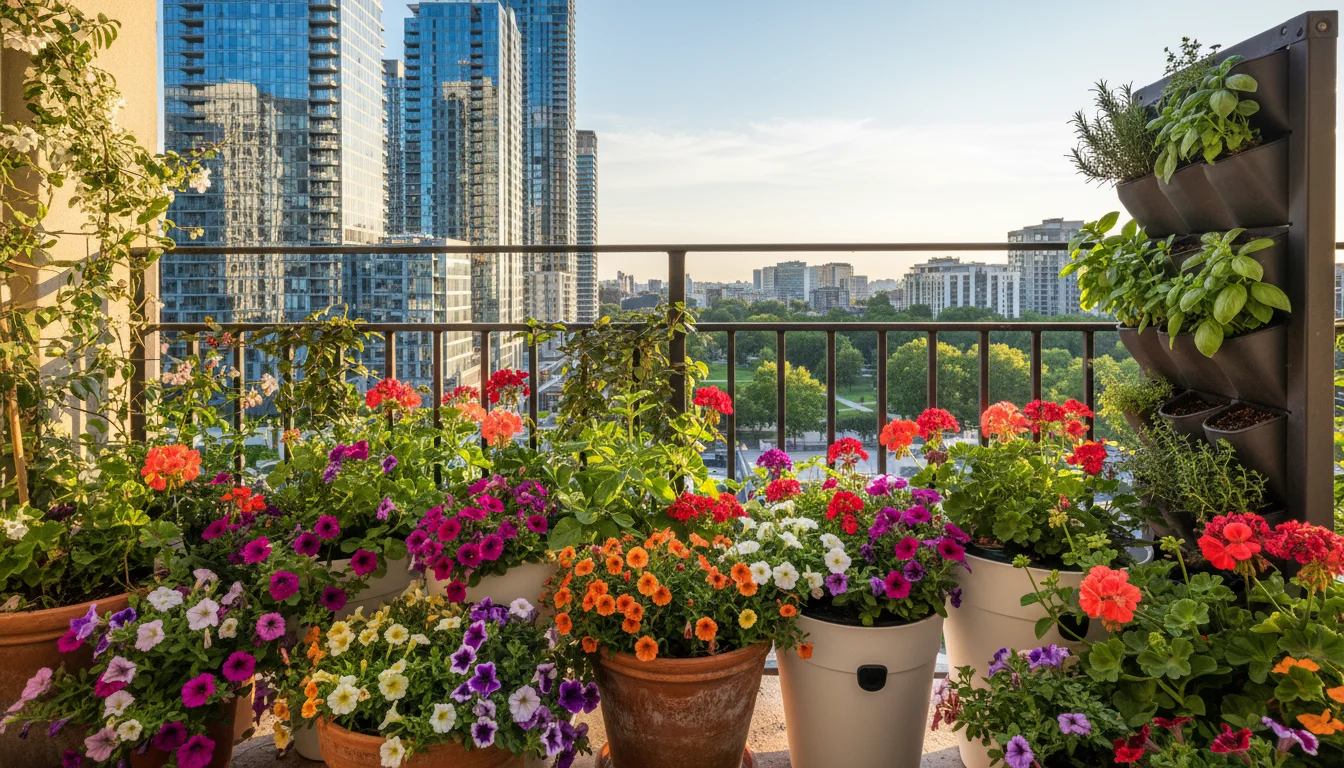
Frequently Asked Questions
Container gardening often brings up specific questions, especially for those seeking continuous summer blooms. Here are answers to some common inquiries.
What is the biggest mistake beginners make with container flowers?
The most significant mistake beginners make is improper watering. They either underwater, causing plants to wilt and die from dehydration, or overwater, which leads to root rot because the roots cannot access oxygen in saturated soil. The key is to check the soil moisture consistently, usually by feeling the top two inches of the potting mix, and watering thoroughly only when needed. Use containers with good drainage holes to prevent waterlogging.
How often should I fertilize flowers in containers?
You should fertilize container flowers more frequently than those in garden beds because nutrients leach out of the potting mix with each watering. For most summer bloomers, a balanced liquid fertilizer applied every two to four weeks during the growing season is a good general guideline. If your potting mix included a slow-release fertilizer, you might start liquid feeding after about a month, adjusting based on the plant’s vigor and bloom production. Always follow the specific product instructions for dilution rates.
Can I leave my container flowers out all winter?
Whether you can leave your container flowers out all winter depends entirely on your climate and the specific plant species. Most flowers for containers that bloom all summer are annuals, meaning they complete their life cycle in one season and will not survive winter frosts. Some, like geraniums, are tender perennials that can be brought indoors to overwinter in a sunny window in cooler climates. Hardy perennials can remain outdoors, but ensure their pots are frost-proof and insulated, as roots in containers are more vulnerable to freezing than those in the ground. Research the hardiness zone of your specific plants and your local climate for best practices.
My container flowers are leggy and not blooming well. What is wrong?
Leggy growth, characterized by stretched stems with sparse foliage and few flowers, typically indicates insufficient sunlight. Most summer bloomers require at least six hours of direct sunlight daily. Move your container to a brighter location. Other contributing factors can include a lack of deadheading, which diverts plant energy to seed production, or an imbalance in fertilizer, particularly too much nitrogen, which promotes leafy growth over flowers. Ensure consistent deadheading and use a fertilizer higher in phosphorus to encourage blooming.
How do I choose the right size pot for my summer blooming flowers?
The right pot size is crucial for healthy summer blooms. As a general rule, aim for containers with a minimum diameter of 10-12 inches for most single flowering plants. Larger plants or mixed arrangements, like “thriller, filler, spiller” designs, will require even larger pots, typically 14-18 inches or more. Larger pots offer more soil volume, which retains moisture longer, stabilizes root temperatures, and provides ample space for root development. Small pots dry out rapidly, stressing plants and hindering growth and blooming. Always ensure the pot has adequate drainage holes.
For trustworthy gardening information, visit:
Pollinator Partnership,
The Xerces Society for Invertebrate Conservation,
International Society for Horticultural Science (ISHS) and
Plantlife (UK). These organizations provide expert, research-based advice for gardeners at all levels.
Disclaimer: This article is for informational purposes only and is not a substitute for professional gardening advice. Always consult local extension services or horticulture experts for region-specific guidance.
